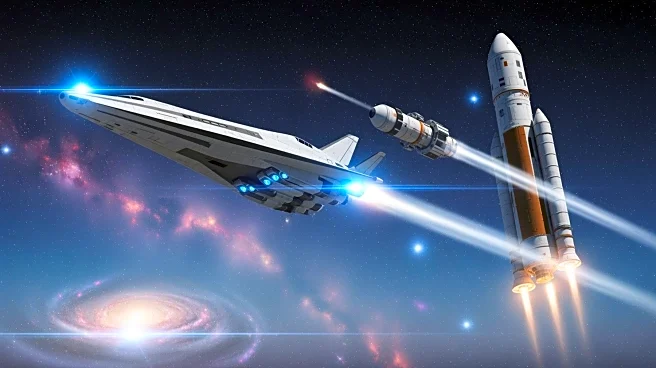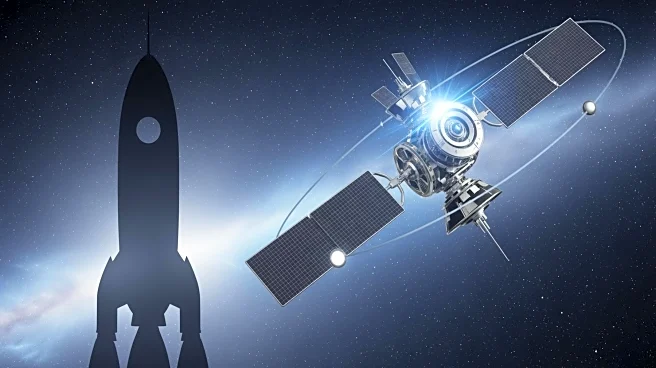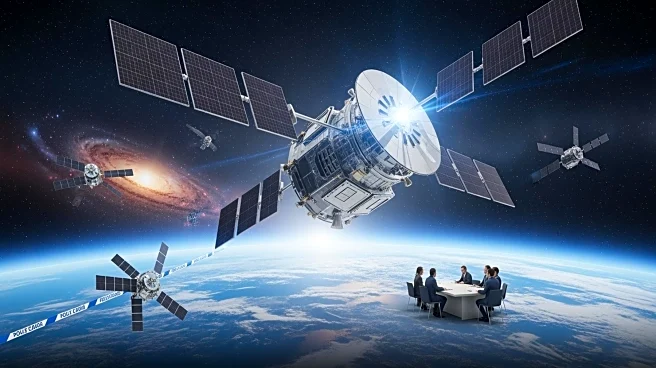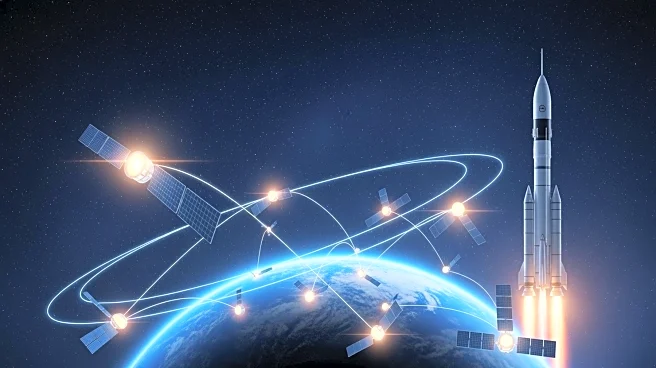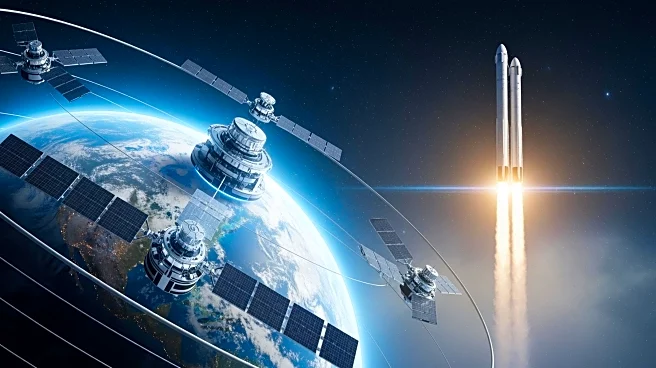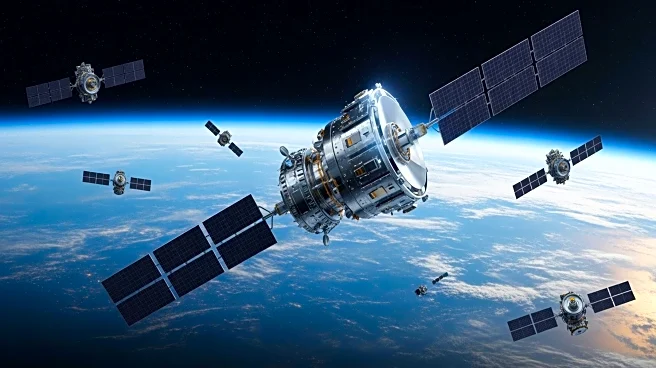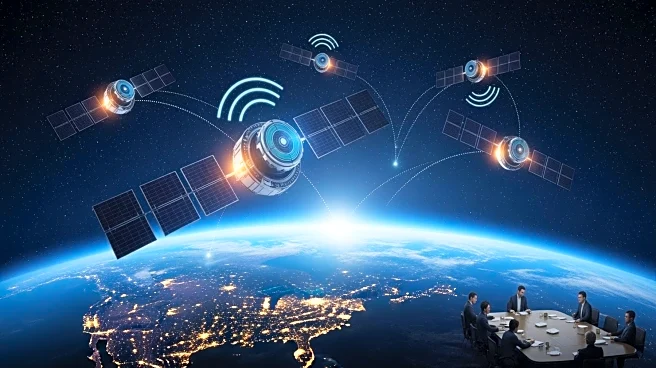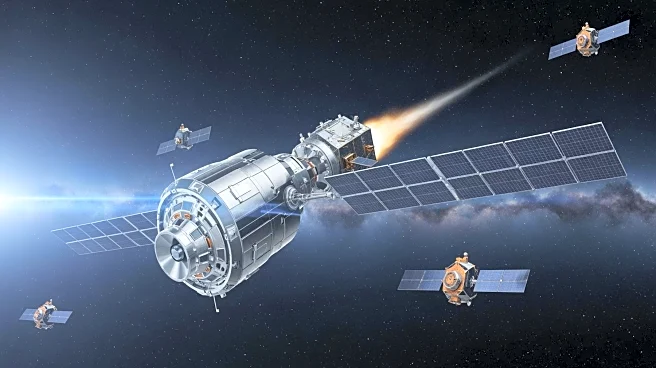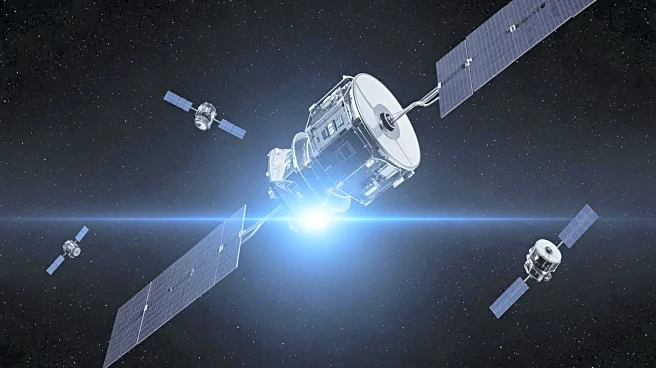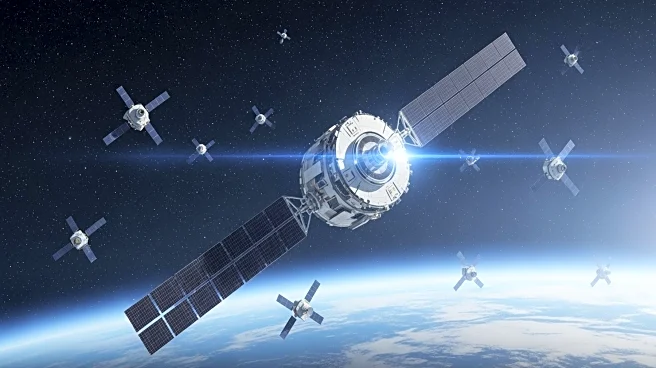What's Happening?
SpaceX has successfully launched its 10,000th Starlink satellite into orbit, marking a significant milestone in its ambitious satellite internet project. The launch took place on October 19, 2025, from Florida's Cape Canaveral Space Force Station. This
mission also set a new record for the Falcon 9 rocket, which completed its 31st flight, showcasing SpaceX's commitment to reusability. The Starlink constellation, which began with two prototype satellites in 2018, has grown rapidly, with SpaceX launching 89 missions in 2024 alone. The company has permission to deploy up to 12,000 satellites, with plans to expand the constellation to over 30,000. The Falcon 9's first stage successfully landed on the drone ship 'A Shortfall of Gravitas' in the Atlantic Ocean, further demonstrating the efficiency of SpaceX's reusable rocket technology.
Why It's Important?
This achievement underscores SpaceX's role in revolutionizing space travel and satellite internet services. The successful deployment of 10,000 Starlink satellites enhances global internet connectivity, particularly in remote and underserved areas. The record-breaking reuse of the Falcon 9 rocket highlights SpaceX's ability to reduce the cost of spaceflight, making it more accessible and sustainable. This development is crucial for the future of space exploration, as it supports SpaceX's long-term goals of Mars colonization and lunar missions. The expansion of the Starlink constellation also raises concerns about space debris and the need for effective space traffic management, which could impact future satellite launches and operations.
What's Next?
SpaceX plans to continue its aggressive launch schedule, with more Starlink missions on the horizon. The company is also developing the Starship rocket, a fully reusable spacecraft designed for deep space missions, including Mars colonization. As SpaceX expands its satellite network, regulatory bodies and international space agencies may need to address the challenges of orbital congestion and debris mitigation. The success of the Starlink project could influence other companies and countries to invest in similar satellite internet initiatives, potentially transforming global communication infrastructure.
Beyond the Headlines
The rapid expansion of the Starlink constellation raises ethical and environmental questions about the impact of mega-constellations on the night sky and astronomical research. The increased presence of satellites could interfere with ground-based telescopes and alter the natural view of the stars. Additionally, the potential for increased space debris necessitates the development of new technologies and international agreements to ensure the long-term sustainability of space activities. As SpaceX continues to push the boundaries of space exploration, these broader implications will need to be addressed by the global community.


